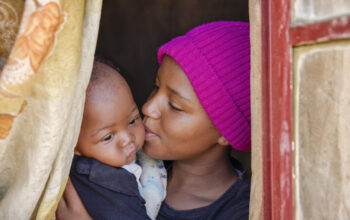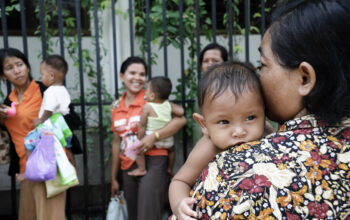m-Health: Responding to Global Health Emergencies
World Population Day, on the 11th July, was established by the Governing Council of the United Nations Development Program in 1989. Its aim is to raise awareness of global population problems, with this year’s focus on vulnerable populations in emergencies.
This theme is timely—the past 12 months have seen natural disasters strike the populations of Nepal and the Philippines, as well as the spread of Ebola virus in Guinea, Liberia and Sierra Leone and MERS in South Korea. Faced with such acute emergencies, this year has often felt like the global development community was always playing catch-up.
However, even just in the past 10 years, emergency respondents and the global health community more broadly have been able to use a new tool: mobile technology. mHealth applications and communication tools are increasingly being developed to combat a range of issues; with most of the world’s population having mobile access, including 5 billion users in developing countries, it is now completely possible to reach those in the remote areas of the world.
mHealth in practice
Pharma companies are increasingly turning to mHealth programs to connect with difficult to reach communities. As an example, the Pediatric Outreach Telehealth project in Mali and Burkina Faso allows community health workers to input patient information into a centralized database to be analyzed by local doctors in real time. As a result, it is 3x easier for children to access healthcare through this system when compared to non-users.
Another example: the mVaccination program in Mozambique uses mHealth technology to increase coverage of lifesaving vaccines, monitoring vaccine stocks and alerting new parents via SMS when they are scheduled to visit the clinic.
mHealth is clearly beginning to impact upon everyday medicine worldwide – but can it be useful in a crisis?
mHealth and vulnerable populations in emergencies
After the 2010 earthquake in Haiti, trial mHealth programs were launched as parts of the official response. One of the unique functions of the system was that assignment of a barcode to each patient, creating a centralized digital system for critical information through the disaster response. This was a marked improvement to the common practice of writing down a patient’s vitals in marker on their skin.
Where mHealth is not used to its full potential, for example during initial response to the Ebola Virus epidemic, when international partners were heavily criticized for a lack of effective collaboration, an absence of data sharing between governments, international organizations, private companies and NGO’s was pinpointed as in part responsible for the upwardly spiraling case load of Ebola virus disease (EVD). mHealth would have been an effective way to bridge these gaps and thus bring the epidemic to an earlier conclusion.
Still playing catch-up – mHealth and NCDs
In 2011, the United Nations General Assembly met for only the second time in its history to agree to an action plan in face of a health crisis: the first was to combat the transmission of HIV/AIDS in sub-Saharan Africa; this second meeting was on the rise of non-communicable diseases (NCDs).
Crises are not restricted to natural disasters and acute outbreaks. As stated by Dr. Margaret Chan, Director-General of the WHO, “the worldwide increase of non-communicable diseases is a slow-motion disaster.”[1]
Driven by globalization, urbanization and unhealthy lifestyles, NCDs may pose a threat of magnitude that we have never encountered before.
Luckily, mHealth is already being utilized in a number of ways to combat this serious problem. One such program is the International Telecommunications Union’s “Be He@lthy, Be Mobile”, which aims to disseminate health promotion messages on NCD risk factors, survey the epidemic and persuading users to change unhealthy behaviors.
The flexibility and penetrating potential of mHealth applications offer a unique way of safeguarding vulnerable populations, whether they are revealed as a result of natural disasters, infectious disease outbreaks or a surge in non-communicable diseases.
[1] Address at the High-level meeting on non-communicable diseases, United Nations General Assembly, 2011. Director-General of the WHO, Dr Margaret Chan. http://www.who.int/dg/speeches/2011/un_ncds_09_19/en/
Author





